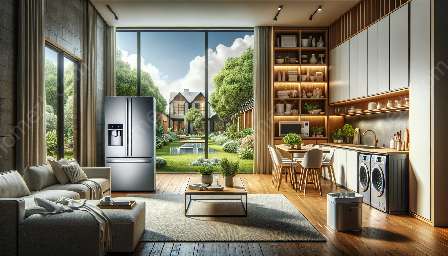Standby generators are essential for providing backup power during outages, but they can also generate significant noise that may affect households and neighborhoods. Understanding noise control solutions for household appliances and homes is crucial in mitigating the impact of generator noise. This comprehensive guide explores techniques and strategies to address noise problems from standby generators and create a peaceful living environment.
Noise Problems from Standby Generators
Standby generators often produce noise due to the operation of internal combustion engines and exhaust systems. The level of noise can vary depending on the generator's size, design, and maintenance. Common noise issues associated with standby generators include:
- Continuous Engine Operation: Standby generators may run for extended periods during power outages, leading to persistent noise disturbances.
- Exhaust Noise: The exhaust system of generators can emit loud, high-frequency sounds that contribute to overall noise levels.
- Vibration and Resonance: Generators can cause structural vibrations and resonances, resulting in additional noise transmission through buildings and surroundings.
- Environmental Impact: Generator noise can disrupt the tranquility of residential areas and affect the well-being of residents.
Noise Control Solutions for Standby Generators
Implementing effective noise control solutions for standby generators is essential for minimizing their impact on households and communities. By incorporating noise reduction techniques and soundproofing measures, generator noise can be significantly mitigated. Some recommended solutions include:
- Placement and Enclosure: Positioning the generator in a distant location or within a soundproof enclosure can help contain and reduce noise emissions.
- Vibration Isolation: Installing anti-vibration mounts and shock absorbers can minimize the transmission of mechanical vibrations and resonate sounds.
- Exhaust Silencers: Utilizing specialized exhaust silencing systems can attenuate exhaust noise and decrease overall generator sound levels.
- Acoustic Barriers: Installing noise-absorbing barriers or acoustic panels around the generator can intercept and dissipate sound waves.
- Regular Maintenance: Performing routine maintenance and inspection of the generator's components can ensure optimal functioning and reduced noise production.
- Sound Absorption Materials: Installing sound-absorbing materials within appliance casings can dampen noise emissions and minimize their impact.
- Isolation Mounts: Using isolation mounts or pads to support appliances can reduce vibration transfer to floors and structures, reducing overall noise levels.
- Noise-Reducing Designs: Opting for appliances with noise-reducing features and engineering can significantly minimize their operational noise.
- Placement and Siting: Strategic placement of appliances and consideration of room layout can help minimize the propagation of noise within homes.
- Effective Insulation: Enhancing insulation in walls, floors, and ceilings can reduce the transmission of external and internal noises.
- Sealing Gaps and Leaks: Sealing gaps around doors, windows, and ducts can prevent the ingress of external noise and maintain a quieter indoor environment.
- Acoustic Treatments: Implementing acoustic treatments such as sound-absorbing materials, curtains, and rugs can help minimize reverberation and enhance indoor acoustics.
- Smart Home Technologies: Leveraging smart home systems for noise monitoring, automation, and control can contribute to overall noise management and comfort.
Noise Control Solutions for Household Appliances
In addition to addressing generator noise, it's crucial to consider noise control solutions for other household appliances to create a harmonious living environment. Common household appliances that may contribute to noise in homes include air conditioners, refrigerators, washing machines, and HVAC systems. Effective noise control solutions for household appliances include:
Noise Control in Homes
Creating a tranquil living environment involves comprehensive noise control measures within homes. In addition to addressing specific appliance and generator noise, it's important to consider overall noise reduction techniques for residential settings, including:
By integrating these noise control solutions for household appliances and homes, along with targeted techniques to address noise problems from standby generators, individuals can create tranquil and peaceful living spaces while ensuring minimal noise impact on their surroundings.


